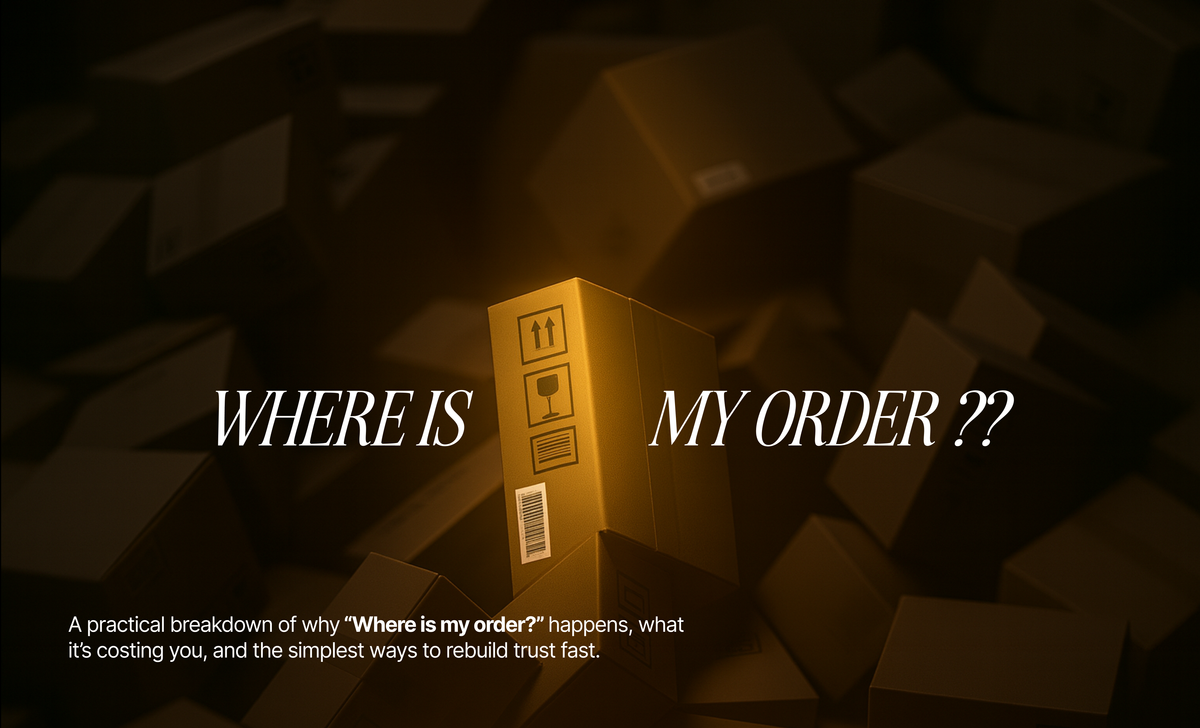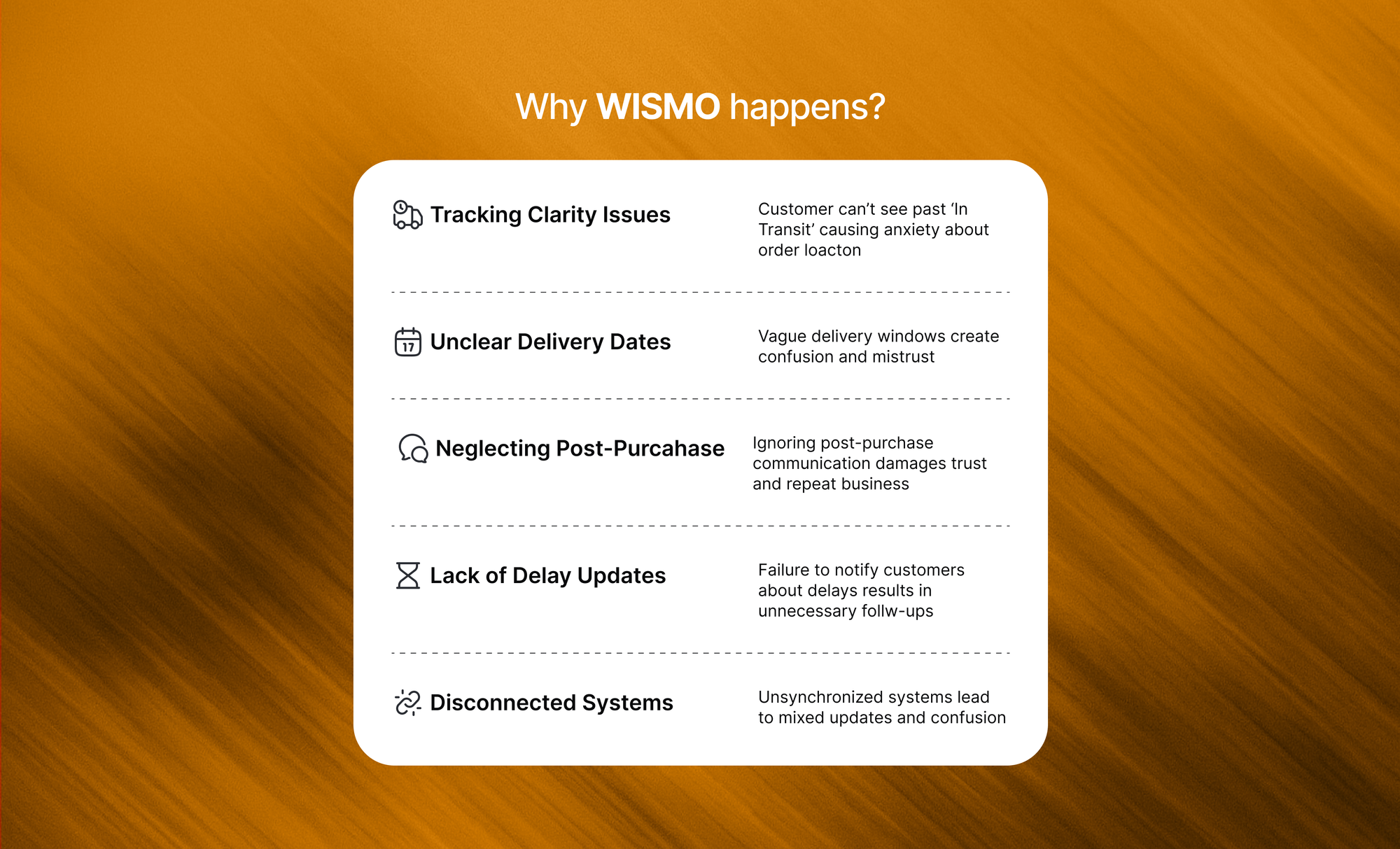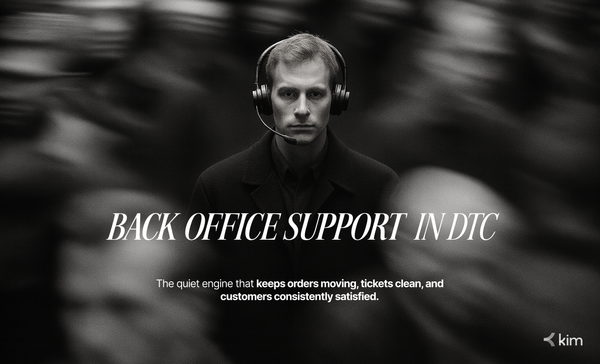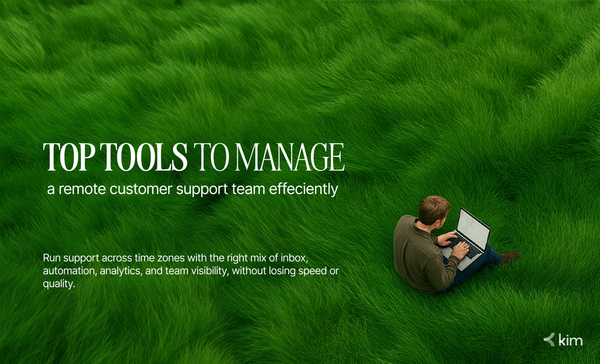What Is WISMO? And How It’s Costing Your Business

Introduction
You’ve just shipped an order, but your customer doesn’t feel it. They keep refreshing the tracking page, they DM support, and within hours your inbox is full of the same question: “Where is my order?” That question is WISMO, and it’s quietly warping customer trust and your support budgets.
In this post we’ll answer What is WISMO, explain exactly why it happens (with real fashion/lifestyle examples woven in), show how it costs you money and growth, and give step-by-step fixes you can start today. If you run a fashion or lifestyle D2C brand, pick one fix here and apply it this week.
Table of Contents
What is WISMO?
WISMO stands for “Where Is My Order?”, it refers to customer inquiries about shipment location, estimated delivery time, or order status. These aren’t tech issues; they’re trust issues. To a layman, it might seem like a simple question. But to any founder or CX head, it’s as big as a recurring nightmare, because each query, no matter how small, multiplies into high costs due to its sheer volume and repetitive nature.
Why WISMO Happens
Let’s walk through the real reasons customers keep asking “Where is my order?”, explained like I’m in your inbox with you.

1) Customers can’t see past “In transit”
Most carrier pages show a bare timeline: shipped → in transit → delivered. That blob of status doesn’t tell a human whether the parcel is in a distribution center, on a truck, or stuck at customs. If your customer ordered a linen dress and all they see is “in transit,” they panic and ask you. Brands that fix this show plain-language status and context, not raw scans.
Example: ASOS improved clarity on its tracking pages during global delays by adding ETA explainers and short notes for exceptions. The clearer timeline cut follow-ups because customers felt informed
2) Expectations were fuzzy from checkout
If your checkout says “3–7 business days” and your warehouse packs on day 4, customers feel misled even when you’re within range. People interpret ranges as promises. Clear, honest delivery windows reduce anxiety.
3) Systems and carriers aren’t synced
Your warehouse, carrier, and support tools often don’t speak to each other. So, while the warehouse marks something as shipped, your support team might still see it as “processing.” Customers end up getting mixed updates, or none at all. And when that happens, they’ll ask. Most delays aren’t the issue; silence is.
4) No proactive communications for exceptions
Delays happen, sometimes it’s the weather, sometimes a reroute, or just plain miscommunication. And honestly, most customers get that. They’re usually okay with a delay if they’re told about it. But many businesses still go quiet, hoping the issue will just disappear. The truth? A quick update does the trick. A simple “Your order’s delayed because X; new ETA Y” goes a long way, most customers won’t even need to ask after that.
5) Post-purchase experience is treated like an afterthought
Many brands focus on conversion and forget the post-purchase funnel. But post-purchase is where trust is built or broken. Narvar and Shopify research both highlight that proactive, helpful post-purchase communications are a key driver of repeat purchases.
What WISMO Costs Brands
This is where theory becomes painfully practical. WISMO doesn’t just clog support queues, it erodes margins, worker morale, and lifetime value.
1) Support cost multiplies quickly
Imagine 10,000 orders in a month. If even 10% of customers send a WISMO ticket, that’s 1,000 simple requests. Two minutes average handling time becomes 33 agent hours. Multiply by your hourly wage and add management overhead, that’s real payroll you could redirect to growth activities.
2) Agent burnout and lowered quality of service
Answering the same “Where’s my order?” question all day is draining. Agents get fatigued, replies start sounding robotic, and when an actual complex issue comes in, they’re already mentally checked out. If you care about your agents’ well-being, here’s a great read on how to prevent customer service burnout, something every brand should take seriously before peak season hits.
3) Trust, the invisible loss
Every time a customer has to chase their order, trust erodes a bit. That shows up later as:
- Fewer repeat purchases
- Lower LTV and higher acquisition cost to replace churned customers
- Worse reviews and more returns (because customers who are anxious about delivery are often anxious about fit and more likely to return)
Example: Gymshark’s investment in milestone notifications and automation freed agents from routine WISMO replies and let them focus on sizing and returns queries, areas that actually improved conversions on repeat buyers. Proactive communication converted nervous first-time buyers into loyal customers. Platforms like Gorgias document how proactive support and automation reduce reply volumes and increase conversion opportunities.
The Hidden Cost of WISMO
The obvious costs are agent hours and wages. The hidden, larger ones are harder to measure but more damaging:
- Higher CAC over time: When retention drops, you spend more to replace lost customers. Bain’s research shows a small change in retention significantly affects profitability.
- Lower margins on repeat cohorts: Repeat customers spend more; losing them erodes margin.
- Lost cross-sell moments: The tracking page is a high-attention space. If it’s purely functional, you miss chances to raise AOV or enroll customers into loyalty programs.
How to Reduce WISMO
Here’s a practical roadmap, ordered from fastest wins to bigger system changes.

Quick wins (15 minutes)
- Put a clear tracking CTA in confirmation emails
Make the tracking link obvious. One click to a branded tracking page deflects many queries. - Add a short, empathetic auto-reply for DMs
Example: “Thanks, your order is on its way. Check tracking here [link]. If it’s delayed, we’ll update you within 24 hours.” That single line buys your support team time.
Short term (1–14 days)
- Create a branded tracking page
“Out for delivery, expected today” beats “In transit.” Add a short FAQ (“What happens if it’s delayed?”). - Automate milestone notifications
Trigger messages at shipped, out for delivery, and delivered. If your provider supports it, add a “delay predicted” notice using carrier intelligence.
Mid term (30–90 days)
- Surface exceptions to your team proactively
If a parcel misses a scan or a route is delayed, auto-alert support and the customer with context. This is where predictive platforms like Project44 / Convey help by flagging likely failures early. - Route routine WISMO to automation and escalate exceptions to humans
Use simple AI responses for “Where is my order?” that pull live tracking and ETA. Reserve human agents for lost packages, returns, and VIP customers. Gorgias and similar platforms show this hybrid model reduces ticket volume while keeping empathy when needed.
Measure & iterate
- Track % of tickets that are WISMO, average handling time, repeat contact rate, and CSAT for post-purchase interactions.
- Prioritize fixes for the carriers/routes that generate the most WISMO.
FAQ
Q: What does WISMO stand for?
A: “Where Is My Order?”, customer queries about order location, ETA, or delivery.
Q: Can automation make WISMO replies sound robotic?
A: Not if you design messages with empathy and include clear next steps. The best automations give context, ETA, and a human escalation path.
Q: Which channel reduces WISMO best?
A: Branded tracking pages + proactive email/SMS. Add messaging channels (WhatsApp) where customers use them heavily.
Final Takeaway
WISMO is not just a logistics problem, it’s a customer-experience problem. Fixing it means giving customers clarity, owning exceptions, and letting tech handle routine updates while humans handle nuance.
Pick one thing to do this week:
- Add a branded tracking link to your confirmation flow, or
- Create one empathetic auto-reply for DMs and messages.
Small changes scale fast. If you want a quick, independent look at where your biggest WISMO hotspots are, Run a free CX audit with kim.cc and we’ll point to the highest-impact wins.




